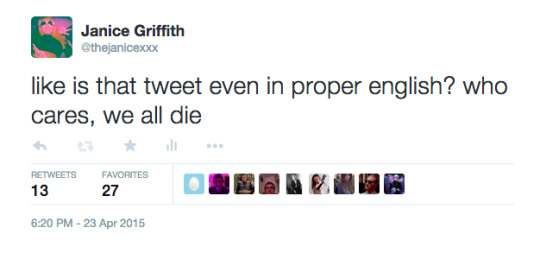No Cohesion. Just beautiful, interesting things and thoughts.
Don't wanna be here? Send us removal request.
Photo



Cameo Studios publicity info forms filled out by Bela Lugosi in 1934.
2K notes
·
View notes
Photo
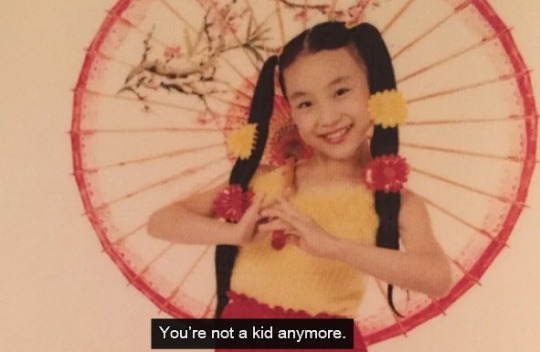
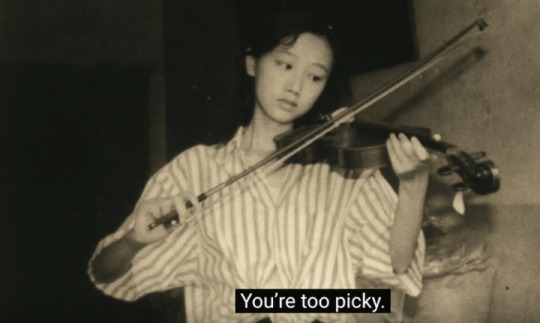

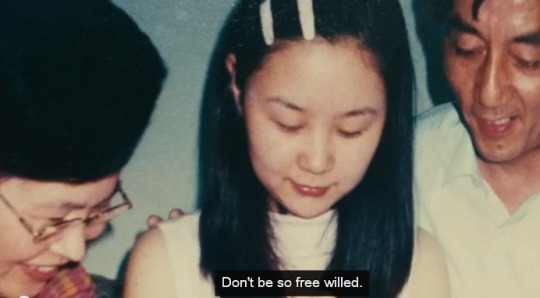


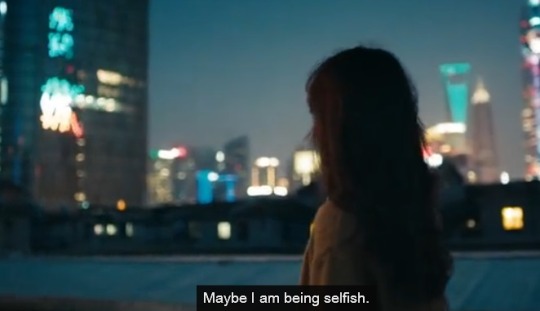


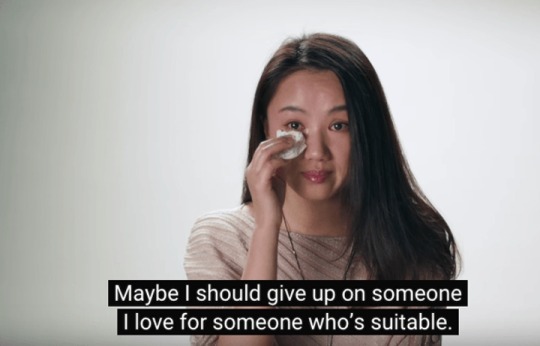
I took some screenshots of this video, about “leftover women” in China, women who are unmarried and over the age of 25. I took screenshots every time someone said something that created a picture with the subtitles that just…. resonated with me. Something women can truly understand.
These women deserve to be heard.
115K notes
·
View notes
Text
in a relationship with healthy communication, arguments should end with understanding on both ends
you have to keep the goal in mind
do you want to win? or do you want to understand that person and resolve the issue? (ask yourself once, then ask again)
the ego loves to win an argument, but relationships are not about feeding your ego
healthy relationships dilute the ego
if you find yourself arguing to win in your relationship, consider what you value more: the love you share with that person, or protecting your ego
99K notes
·
View notes
Text
i never talk to my mutuals i just kinda exist and hope they have psychic abilities and find out i love em via my earthly vibrations
199K notes
·
View notes
Text
Am I a shitty teacher, or are my high schoolers just tired zombies?
An autobiography
132 notes
·
View notes
Photo

Elvis Presley waiting for his bacon and eggs while a woman waits for her sandwich. she is not permitted to sit, 1956
1K notes
·
View notes
Text
reminder to:
-take your meds if you haven’t -eat something if you haven’t -go outside and get some fresh air if you haven’t and are able to -smile, you’re alive and that’s pretty neat
2K notes
·
View notes
Quote
Because nothing is as good as you can imagine it. No one is as beautiful as she is in your head. Nothing is as exciting as your fantasy.
Chuck Palahniuk, Asfixia (via thewrittenroad)
157 notes
·
View notes
Link
I’m so tired of white guys on TV telling me what to eat. I’m tired of Anthony Bourdain testing the waters of Korean cuisine to report back that, not only will our food not kill you, it actually tastes good. I don’t care how many times you’ve traveled to Thailand, I won’t listen to you—just like the white kids wouldn’t listen to me, the half-Korean girl, defending the red squid tentacles in my lunch box. The same kids who teased me relentlessly back then are the ones who now celebrate our cuisine as the Next Big Thing.
I grew up in the Pacific Northwest, in a small college town that was about 90 percent white. In my adolescence I hated being half Korean; I wanted people to stop asking, “Where are you really from?” I could barely speak the language and didn’t have any Asian friends. There was nothing about me that felt Korean—except when it came to food.
At home my mom always prepared a Korean dinner for herself and an American dinner for my dad. Despite the years he’d lived in Seoul, selling cars to the military and courting my mom at the Naija Hotel where she worked, my dad is still a white boy from Philadelphia.
So each night my mom prepared two meals. She’d steam broccoli and grill Dad’s salmon, while boiling jjigae and plating little side dishes known as banchan. When our rice cooker announced in its familiar robotic voice, “Your delicious white rice will be ready soon!” the three of us would sit down to a wondrous mash-up of East and West. I’d create true fusion one mouthful at a time, using chopsticks to eat strips of T-bone and codfish eggs drenched in sesame oil, all in one bite. I liked my baked potatoes with fermented chili paste, my dried cuttlefish with mayonnaise.
There’s a lot to love about Korean food, but what I love most is its extremes. If a dish is supposed to be served hot, it’s scalding. If it’s meant to be served fresh, it’s still moving. Stews are served in heavy stone pots that hold the heat; crack an egg on top, and it will poach before your eyes. Cold noodle soups are served in bowls made of actual ice.
By my late teens my craving for Korean staples started to eclipse my desire for American ones. My stomach ached for al tang and kalguksu. On long family vacations, with no Korean restaurant in sight, my mom and I passed up hotel buffets in favor of microwaveable rice and roasted seaweed in our hotel room.
And when I lost my mother to a very sudden, brief, and painful fight with cancer two years ago, Korean food was my comfort food. She was diagnosed in 2014. That May she’d gone to the doctor for a stomachache only to learn she had a rare squamous cell carcinoma, stage four, and that it had spread. Our family was blindsided.
I moved back to Oregon to help my mother through chemotherapy; over the next four months, I watched her slowly disappear. The treatment took everything—her hair, her spirit, her appetite. It burned sores on her tongue. Our table, once beautiful and unique, became a battleground of protein powders and tasteless porridge. I crushed Vicodin into ice cream.
Dinnertime was a calculation of calories, an argument to get anything down. The intensity of Korean flavors and spices became too much for her to stomach. She couldn’t even eat kimchi.
I began to shrink along with my mom, becoming so consumed with her health that I had no desire to eat. Over the course of her illness, I lost 15 pounds. After two rounds of chemo, she decided to discontinue treatment, and she died two months later.
As I struggled to make sense of the loss, my memories often turned to food. When I came home from college, my mom used to make galbi ssam, Korean short rib with lettuce wraps. She’d have marinated the meat two days before I’d even gotten on the plane, and she’d buy my favorite radish kimchi a week ahead to make sure it was perfectly fermented.
Then there were the childhood summers when she brought me to Seoul. Jet-lagged and sleepless, we’d snack on homemade banchan in the blue dark of Grandma’s humid kitchen while my relatives slept. My mom would whisper, “This is how I know you’re a true Korean.”
But my mom never taught me how to make Korean food. When I would call to ask how much water to use for rice, she’d always say, “Fill until it reaches the back of your hand.” When I’d beg for her galbi recipe, she gave me a haphazard ingredient list and approximate measurements and told me to just keep tasting it until it “tastes like Mom’s.”

After my mom died, I was so haunted by the trauma of her illness I worried I’d never remember her as the woman she had been: stylish and headstrong, always speaking her mind. When she appeared in my dreams, she was always sick.
Then I started cooking. When I first searched for Korean recipes, I found few resources, and I wasn’t about to trust Bobby Flay’s Korean taco monstrosity or his clumsy kimchi slaw. Then, among videos of oriental chicken salads, I found the Korean YouTube personality Maangchi. There she was, peeling the skin off an Asian pear just like my mom: in one long strip, index finger steadied on the back of the knife. She cut galbi with my mom’s ambidextrous precision: positioning the chopsticks in her right hand while snipping bite-size pieces with her left. A Korean woman uses kitchen scissors the way a warrior brandishes a weapon.
I’d been looking for a recipe for jatjuk, a porridge made from pine nuts and soaked rice. It’s a dish for the sick or elderly, and it was the first food I craved when my feelings of shock and loss finally made way for hunger.
I followed Maangchi’s instructions carefully: soaking the rice, breaking off the tips of the pine nuts. Memories of my mother emerged as I worked—the way she stood in front of her little red cutting board, the funny intonations of her speech.
For many, Julia Child is the hero who brought boeuf bourguignon into the era of the TV dinner. She showed home cooks how to scale the culinary mountain. Maangchi did this for me after my mom died. My kitchen filled with jars containing cabbage, cucumbers, and radishes in various stages of fermentation. I could hear my mom’s voice: “Never fall in love with anyone who doesn’t like kimchi; they’ll always smell it coming out of your pores.”
I’ve spent over a year cooking with Maangchi. Sometimes I pause and rewind to get the steps exactly right. Other times I’ll let my hands and taste buds take over from memory. My dishes are never exactly like my mom’s, but that’s OK—they’re still a delicious tribute. The more I learn, the closer I feel to her.
One night not long ago, I had a dream: I was watching my mother as she stuffed giant heads of Napa cabbage into earthenware jars.
She looked healthy and beautiful.
Michelle Zauner is a writer and musician in Brooklyn.
30K notes
·
View notes









